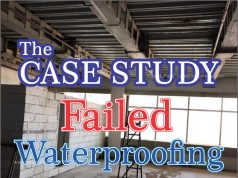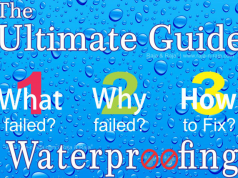What Is Efflorescence?
Efflorescence is a French word which means To Flower Out. For a layman, Efflorescence is a powdery deposit on surfaces of brick, concrete, cement plaster or other building surfaces also known as Whiskers or Salting. They are usually found on the Walls & floors. Efflorescence occurs with most of all concrete and appears boldly in case of coloured concrete and appears as concrete discolouration.
To our experience, Efflorescence is a white to pale / greyish appearing crystalline deposits like Salt coming out to surface during or due to evaporation process of Water within Brick, Concrete, Plaster, Stucco or any other porous building surface.
Chemically, efflorescence is the migration of a salt to the surface of a porous material, where it deposits
Efflorescence occurs when surface is exposed to Moist or cool conditions eventually.
Let’s understand more about efflorescence and what could be done to overcome this issue!
Identification of Efflorescence:
For a layman, Efflorescence or Stain is difficult to understand. Not only layman, even contractors and paint experts get confused at times.
But Let’s make it simpler for you to understand the difference between Stain & Efflorescence.
Stains usually come in various colours but may appear similar to efflorescence at first.
Efflorescence is a white to greyish powdery substance that can be found on unsealed surfaces (attached image for reference).

What Causes Efflorescence?
Efflorescence is a deposit of Calcium, Sodium, potassium hydroxides, carbonates, bi-carbonates, chlorides, sulphates of calcium and magnesium often found in earth materials migrated to surfaces of Concrete, Brick, Cement Plaster.
Any building material containing earth materials like Portland cement results in Efflorescence.
As Portland cement possess above mentioned compounds and originate as water soluble compound.
These compounds are transported & deposited on surface due to upward migration of moisture due to evaporation / hydration process. Also, at times these compounds originate from the foundation/ground soil and they get transported to the surface of concrete through concrete and gets deposited.
Water act as a solvent and transport carriage for these soluble compounds / salts to the surface.
You may notice efflorescence anywhere there is use of Portland Cement is been used generally. Efflorescence occurs on both indoors and outside, and it can vary in frequency and intensity depending on the geographic location on earth. Starting from Basement onwards up to the height of the moon where there is brick / stucco or concrete is been used.

The generic conditions for occurrence of efflorescence are:
- Water-soluble compounds like Calcium, Sodium, potassium hydroxides, carbonates, bi-carbonates, chlorides, sulphates of calcium and magnesium must be present in the water or any raw ingredient.
- Water or its form (Moisture) must be available to transform these salts into a soluble solution.
- Movement of Salts must be available through a material to its surface. The moisture will then evaporate and cause the salts to crystallize, resulting in efflorescence.
Water or its form like rain and snow are the primary sources of moisture and affect the intensity of efflorescence. Moisture concentration also alters due to factors like Condensation, groundwater table and interior activities.
In many instances, efflorescence may occur post home construction but it’s cause is identified of during the construction period. If bricks are kept on damp soil or rain, they absorb moisture from damp soil and rain.
Efflorescence appears often if no protection measure is being followed. Also at time efflorescence is season based problem. And at time it also resembles the symptoms of seepage or leakage
Humidity within the closed environment also affects the salting problem.
Read more about Prevention Measure for Efflorescence.
If you already got Efflorescence read Getting Rid of Efflorescence.






Just wanted to say I love reading your blog and look forward to all
your posts! Carry on the fantastic work!
I’m truly enjoying the design and layout of your site.
It’s a very easy on the eyes which makes it much
more pleasant for me to come here and visit more often.
When It can be regular for a little bit mildew to take place anywhere h2o accumulates,
like in the corner of a shower, mold or mildew on nonshower partitions or
in corners in the bathroom is a transparent indicator that h2o is leaking somewhere
and finding its approach to those locations.
Youre so cool! I dont suppose Ive learn something like this before. So nice to search out someone with some unique ideas on this subject. realy thank you for starting this up. this web site is something that’s needed on the web, someone with somewhat originality. useful job for bringing something new to the web!
Looking forward to reading more. Great article. Fantastic.
Very informative blog.Thanks Again. Really Great.